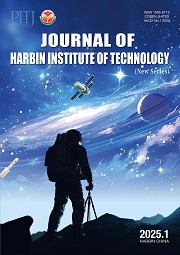| Author Name | Affiliation | | Jing Teng | College of Transportation Engineering, Tongji University, Shanghai 201804, China
Shanghai Key Laboratory of Rail Infrastructure Durability and System Safety, Tongji University, Shanghai 201804, China
Shanghai Collaborative Innovation Research Center for Multi-Network & Multi-Modal Rail Transit, Tongji University, Shanghai 201804, China | | Jinke Gao | College of Transportation Engineering, Tongji University, Shanghai 201804, China
Shanghai Key Laboratory of Rail Infrastructure Durability and System Safety, Tongji University, Shanghai 201804, China
Shanghai Collaborative Innovation Research Center for Multi-Network & Multi-Modal Rail Transit, Tongji University, Shanghai 201804, China | | Pengling Wang | College of Transportation Engineering, Tongji University, Shanghai 201804, China
Shanghai Key Laboratory of Rail Infrastructure Durability and System Safety, Tongji University, Shanghai 201804, China
Shanghai Collaborative Innovation Research Center for Multi-Network & Multi-Modal Rail Transit, Tongji University, Shanghai 201804, China |
|
| Abstract: |
| The rapid growth of passenger flow in urban rail transit has led to great service pressures for metro companies in organizing train services to provide higher transportation capacities in order to satisfy passengers travel demand, especially on those metro lines with insufficient rolling stock. In order to cope with high passenger flow service pressure, a mixed integer nonlinear programming (MINLP) model is proposed to optimize the line plan, timetable and rolling stock circulation simultaneously, to reduce the number of rolling stocks and increase the number of full-length services. A two-step algorithm strategy is proposed. In the first stage, the train timetable is optimized under the assumption that all the train services are the full-length services. In the second stage, the rolling stock plan is optimized based on the timetable optimized in the first stage. To ensure a feasible rolling stock circulation, certain full-length services are shortened to the short-length services due to the limited number of rolling stocks. Numerical experiments are performed based on the real-life data of Shanghai Metro Line 8. Results show that the proposed method can efficiently optimize the timetable and rolling stock circulation of the whole operation day. The optimized results are beneficial for both the service and the operational costs. |
| Key words: urban rail transit mixed integer nonlinear programming timetable design rolling stock circulation |
| DOI:10.11916/j.issn.1005-9113.23064 |
| Clc Number:U239.5 |
| Fund: |
|
| Descriptions in Chinese: |
| 大小交路嵌套模式下城市轨道交通列车时刻表和车底运用协同优化 滕靖1,2,3,高金科1,2,3,王鹏玲1,2,3 (1.同济大学 交通运输工程学院,上海 201804; 2.同济大学 上海市轨道交通结构耐久与系统安全重点实验室,上海 201804;3.同济大学 上海市多网多模式轨道交通协同创新中心,上海 201804) 摘要:城市轨道交通客流的快速增长,给轨道交通运输组织带来了巨大的服务压力。对于车辆不足的地铁线路,需要重新组织列车服务,提供更高的运输能力,以满足乘客的出行需求。为了应对大客流服务压力,提出一种混合整数非线性规划(MINLP)模型,将交路、列车时刻表和车底运用共同优化,模型以减少车底数量,增加大交路列车数量为目标,并提出了二阶段的算法求解策略。在第一阶段,假设所有列车都是大交路列车,求解全线列车时刻表。第二阶段,在第一阶段列车时刻表基础上,优化车底运用。由于车底数量有限,为保证车底运用的可行性,将某些大交路列车缩短为小交路列车。最后以上海地铁8号线为例进行了数值实验。研究结果表明,本文提出的方法能有效协同优化整个运营日的列车时刻表和车底运用,优化结果对运输服务和运营成本都是有利的。 关键词: 城市轨道交通; 混合整数非线性规划; 列车时刻表; 车底运用 |




